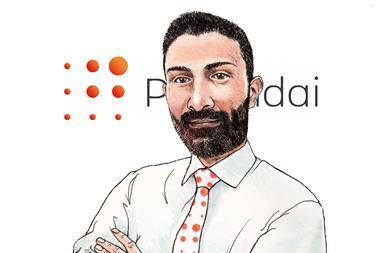The technical funding ratio of Switzerland’s largest pension fund, BVK, dropped to an underfunding level of 98.6% at the end of June this year from 111.6% at the end of last year.
Global political instability caused by the war in Ukraine, but also falling equity prices due to supply chain shortages related to the ongoing pandemic, and the sharp rise in interest rates, had an impact on the funding ratio in the first six months of this year, the pension fund explained in a statement.
BVK has posted returns of -10.7% year-to-date, compared with 8% achieved at the end of last year. It had CHF41.4bn (€41.8bn) in assets under management at the end of 2021, according to the pension fund’s financial figures.
The Pensionskasse underlined that the rise in interest rates is a positive aspect, but it leads to negative valuation corrections in terms of asset allocation, especially in the case of fixed income investments, and to a short-term reduction of its funding ratio.
Equity investments in BVK’s portfolio have lost more than 15% and fixed income assets have experienced a correction in terms of valuation of around 9% as a result of the interest rate hike, the pension fund said.
BVK tends to fend off negative years on equity markets with long-term planning. The rise in interest rates is positive for Pensionskassen in the long-term because it gradually gives them more freedom of action to invest, it said.
It noted that the funding ratio at the end of the calendar year is always more relevant for the interest rate on savings and restructuring contributions.
The underfunding recorded in H1, BVK added, is part of the business of a pension fund that has to generate a return above the risk-free interest rate with the investment strategy.
Over the past 10 years the pension fund has returned on average 5.6% per year, taking risks to invest its assets that led to fluctuations in terms of expected returns in the range of +10 and -5% in “normal” years, it said.
Challenging H1
Funding ratios of Swiss Pensionskassen fell massively in the second quarter of this year.
Private pension funds’ funding levels fell to 107.8% in H1 from 122.1% at the end of last year, according to the Pensionskassen-Monitor published today by Swisscanto.
They plunged from 112.9% at the turn of last year to 99.3% in the first half of this year for fully funded public pension funds, and from 90.8% to 81.4% for partially funded public pension funds.
Private pension funds recorded a sharp decline in their reserves of 9.3 percentage points on average to 7.8% in the second quarter of the year. At the end of June, fluctuation reserves were again well below the average target of 18%.
The ability to fund pension obligations has therefore deteriorated since the beginning of the year, with only 26.2% of private pension funds and 11.1% of public pension funds having a funding ratio of more than 115% at the end of June, the report added.
It also showed that 8.4% of private pension funds, 25% of public pension funds, and 87.5% of partially funded public pension funds reported underfunding in the first half og the year.
Swiss Pensionskassen retuned -7.4% in the second quarter of 2022 and -10.81% year-to-date.
All asset classes recorded losses so far this year except commodities (24.44%). Swiss bonds lost 10.20%, while foreign bonds returned -9.54%, foreign bonds hedged in Swiss francs -9.88%, Swiss equities -15.87%, foreign equities -16.48%, direct and indirect investments in Swiss real estate -6.43%, hedge funds -5-75%, according to the Pensionskassen-Monitor.
The latest digital edition of IPE’s magazine is now available

















No comments yet